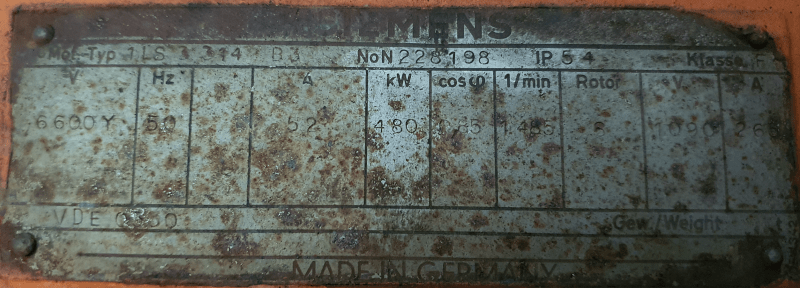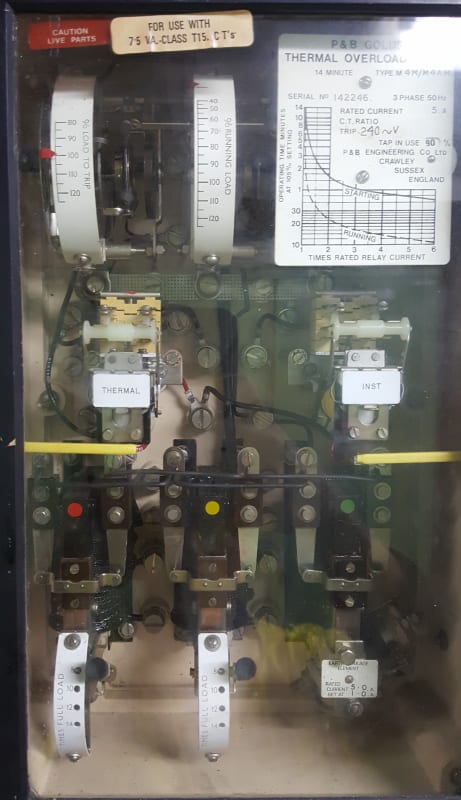Dhruv B Patel
Electrical
- Dec 19, 2022
- 4
Dear team,
Could you help to interpret this Motor Nameplate data?
The main interest is to interpret the locked rotor current and safe stall time. The Rotor Code is S and V:1090, A:265.
Is 265 A (500% of Rated current 52A) locked rotor current? What is the standard hot-locked rotor time for the below motor?

Many thanks
Regards,
Dhruv
Could you help to interpret this Motor Nameplate data?
The main interest is to interpret the locked rotor current and safe stall time. The Rotor Code is S and V:1090, A:265.
Is 265 A (500% of Rated current 52A) locked rotor current? What is the standard hot-locked rotor time for the below motor?

Many thanks
Regards,
Dhruv

